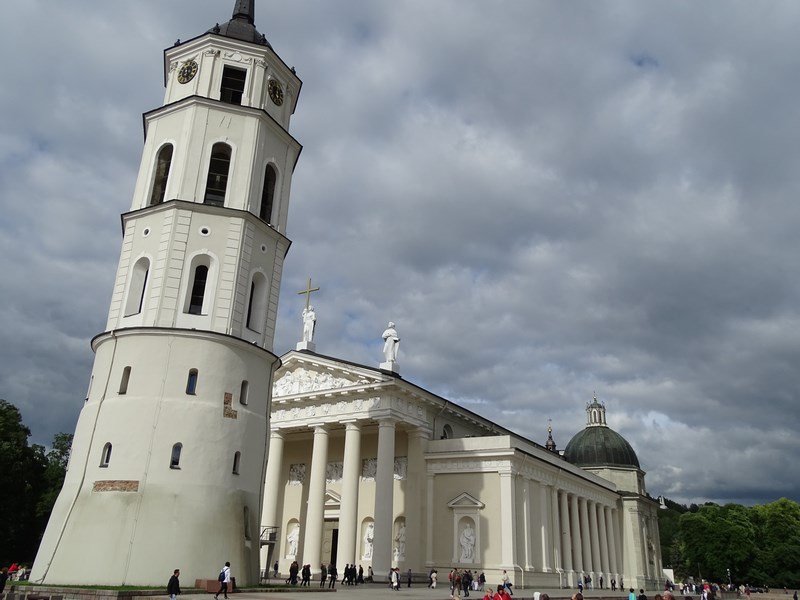Carpatair Destinations: Verona in Love – ” Un cuore da scoprire”. Part 2
We continue today with the most interesting sights of Verona in partnership with the Romanian regional airline, Carpatair. Enjoy the reading and if you’ve been there and you have some tips and advices to share, I would be grateful 🙂
Castel Vecchio – A Palace ‘Darkened’ by History
The castle was built by one of the most hated tyrants who have ever ruled Verona, Can- Grande II Della Scala, in mid- 15th century. The castle was built on the already existing
fortifications, with the goal of serving both as a residence and a defense location against any attacks coming from the city or the medieval Tyrol. They say the tyrant was hiding here from the oppressed city dwellers. The castle walls were built in the 12th century, simultaneously with its seven guard towers. In the castle patio, the vertical line is set by the abrupt lumbering line of the Del Mastio Tower, a rigid construction erected at the end of the 14th century.
After the fall of the Della Scala dynasty, the castle was used by Venetians as a weapon storage area. Around the year 1700, the fortress was already hosting the Military Academy, thus definitively losing its properties as a residence. It was only in 1923 that the architects of that era managed to “clean’ the severe military architecture and replace it with the sweet Renaissance shapes or the straight clear lines of the late Gothic style. Bombarded during the Second World War, Castel Vecchio remained derelict for a while. It was restored as late as 1964, when the ancient Porta del Morbio (apparently built in the 12th century) was also discovered and restructured.
Today, the 29 halls of the Castle harbor many works of art from various periods, beginning with the ancient Christian times and going back to the end of the 18th century.
7 centuries over the Dynastic Bridge of “Della Scala”
Across the Adige River, right in front of Castel Vecchio, one can see the Della Scala Bridge.
Built upon three unequal arches, during the second half of the 14th century, it was bombarded by the Germans during the Second World War and completely rebuilt in 1950, using the original blocks found on the bottom of the river. The Della Scala Bridge is currently accessible only for pedestrians, just like the Ponte Vecchio of Florence.
The “Della Scala” dynasty started as a family of wool merchants, very agile and focused, who managed to climb very fast on the social ladder. Due to the first representative of the family, Mastino I, the family gained access to the key religious and administrative positions of the city. After the death of Mastino I, his successor was Alberto I, who also became the capitano.
He was followed by Bartolomeu (apparently this was the time when Romeo and Juliet’s story took place), Alboino and finally the man who wrote the most beautiful page in the history of Verona: Cangrande I della Scala. He fortified Verona with strong walls, in line with the standards of the major other European cities.
The Dynastic Arch of the Gavia Family
On the right side of the castle, in a verdure area opening onto the banks of the Adige River you can see the Gavia Arch, a construction built towards the 1st century A.D. by the Roman architect Lucio Vitruvio Cerdone. The artist’s signature on the monument, a very rare occurrence during the classic era, is only one of the many aspects that have rendered this monument famous. It was built to honor one of the most important families in Roman Verona, Gavia. During the Dark Ages, this Arch, used as the main entrance of the city, included the area between the city walls and the Clock Tower.
However, in 1800 the French decided to demolish the latter, since it interfered with military traffic. The stones of the monument were therefore moved first into the Citadella Square, then into the Arena of Verona. In 1932, the tower was rebuilt using its original blocks, and erected on its original site.
Silence under the Eternal Marble
Very close to Castel Vecchio, in the narrow crossroad of two streets paved with marble
slabs, you can find five graves belonging to the Della Scala family. Built in the purest Gothic style, they are protected by a fine original intertwining of wrought iron. The most interesting of the five graves is perhaps the grave of Cansignorio, resembling the Dome Cathedral from Milan in terms of decorative lines and complexity. On top of the monument, the equine statue of the prince dominates both the heights and the crowds.
Archaeological Research in the Palaces of the “Della Scala” Dynasty
The Mayoralty of Verona initiated a restoration project for the Palazzo del Capitanio compound in the Piazza dei Signori, in the late 1970s. Discoveries made here have revealed numerous Roman and medieval archaeological vestiges that further transformed this research into the most complex discovery in Northern Italy. During the Roman era, until the 5th century A.D., this area was to be occupied by private residences that used to be frequently restructured. During the following century, these houses were gradually abandoned and, following a long period of urban decadency that lasted until the 10th century, the land around them was cultivated by locals. The graveyard of S. Maria Antica was founded here during the 11th century, to be also abandoned one century later. In the 13th century, Alberto I della Scala became the owner of this whole area, building palaces over the remains of the former houses, as well as the cemetery…
Sights of Verona
San Fremo Church
Streets of Verona
The l0nely statue of Juliet
Historical bikes in the center of Verona
Verona Amphitheater from the air
Verona in love 🙂
About Carpatair
Founded in 1999, Carpatair is the largest regional airline in Eastern and South-Eastern Europe. From 2000, Carpatair has developed in Timisoara the most professional HUB in Romania, connecting 7 domestic and 14 international airports. Carpatair operates over 200 flights / week to 21 destinations in 5 countries.

















